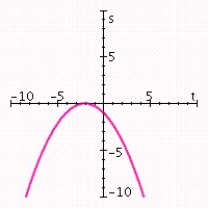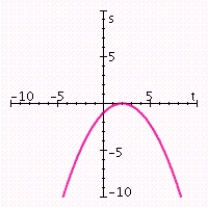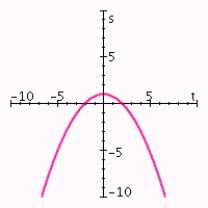Graph the quadratic function. Specify the vertex, axis of symmetry, maximum or minimum value, and intercepts.
A) vertex: (- 2, 0) ; axis of symmetry: t = - 2; maximum value: 0; t-intercept: - 2; s-intercept: -1. 
B) vertex: (- 2, 0) ; axis of symmetry: t = - 2; minimum value: 0; t-intercept: - 2; s-intercept: 1. 
C) vertex: (2, 0) ; axis of symmetry: t = 2; maximum value: 0; t-intercept: 2; s-intercept: -1. 
D) vertex: (0,1) ; axis of symmetry: t = 0; maximum value: 1; t-intercept: ; s-intercept: 1. 
E) vertex: (0, 2) ;axis of symmetry: t = 0; maximum value: 2; t-intercept: ;s-intercept: 2. 
Correct Answer:
Verified
Q1: Find all fixed points of the
Q2: Suppose that the revenue generated by
Q3: Sketch the graph of the function
Q5: Sketch the graph of the function and
Q6: A triangle is inscribed in a
Q7: Plot the following points: (6, 2), (7,
Q8: Sketch the graph of the function and
Q9: What is the largest possible area for
Q10: Find the linear function satisfying the
Q11: For the following figure, express the
Unlock this Answer For Free Now!
View this answer and more for free by performing one of the following actions

Scan the QR code to install the App and get 2 free unlocks

Unlock quizzes for free by uploading documents